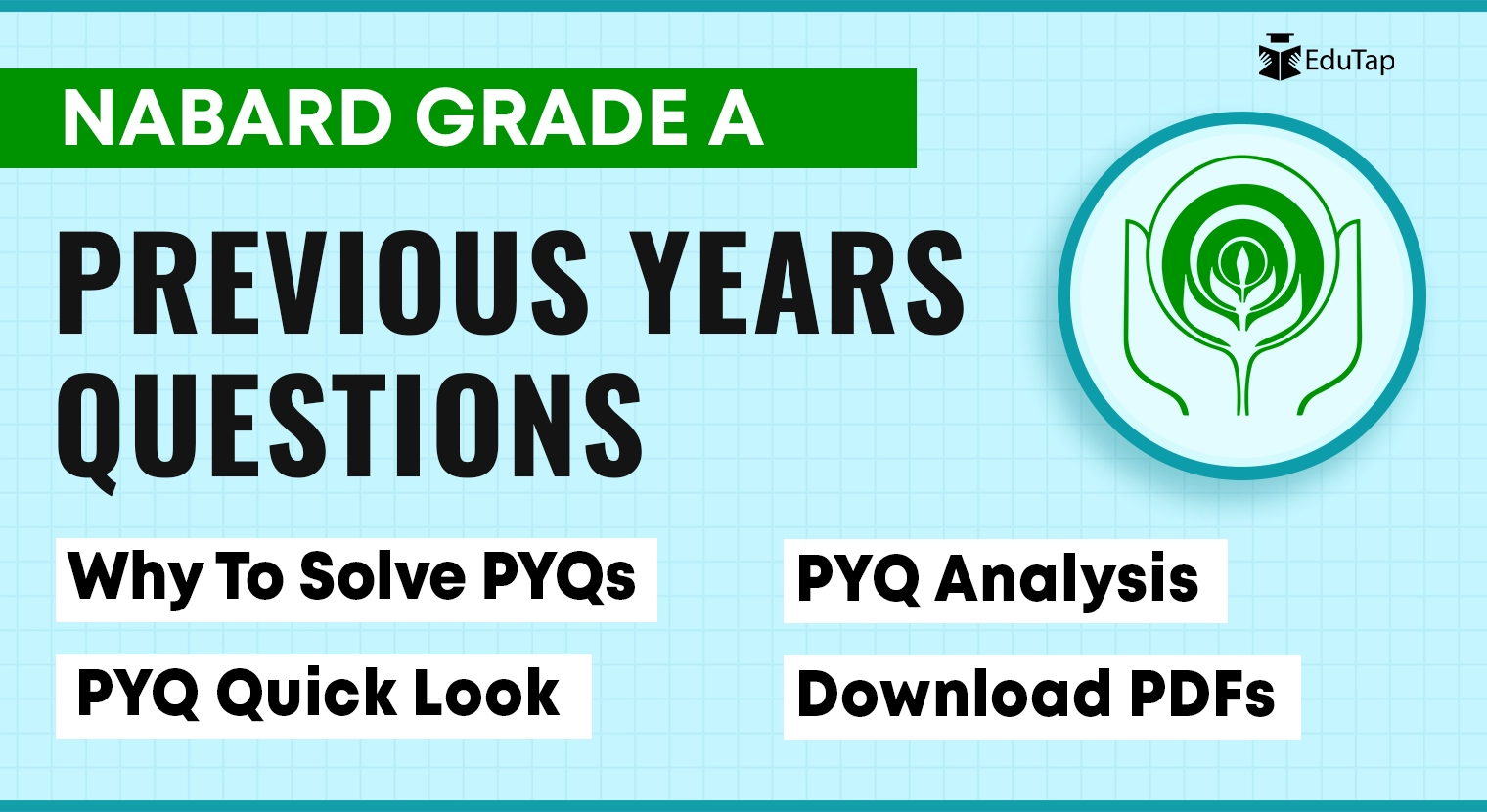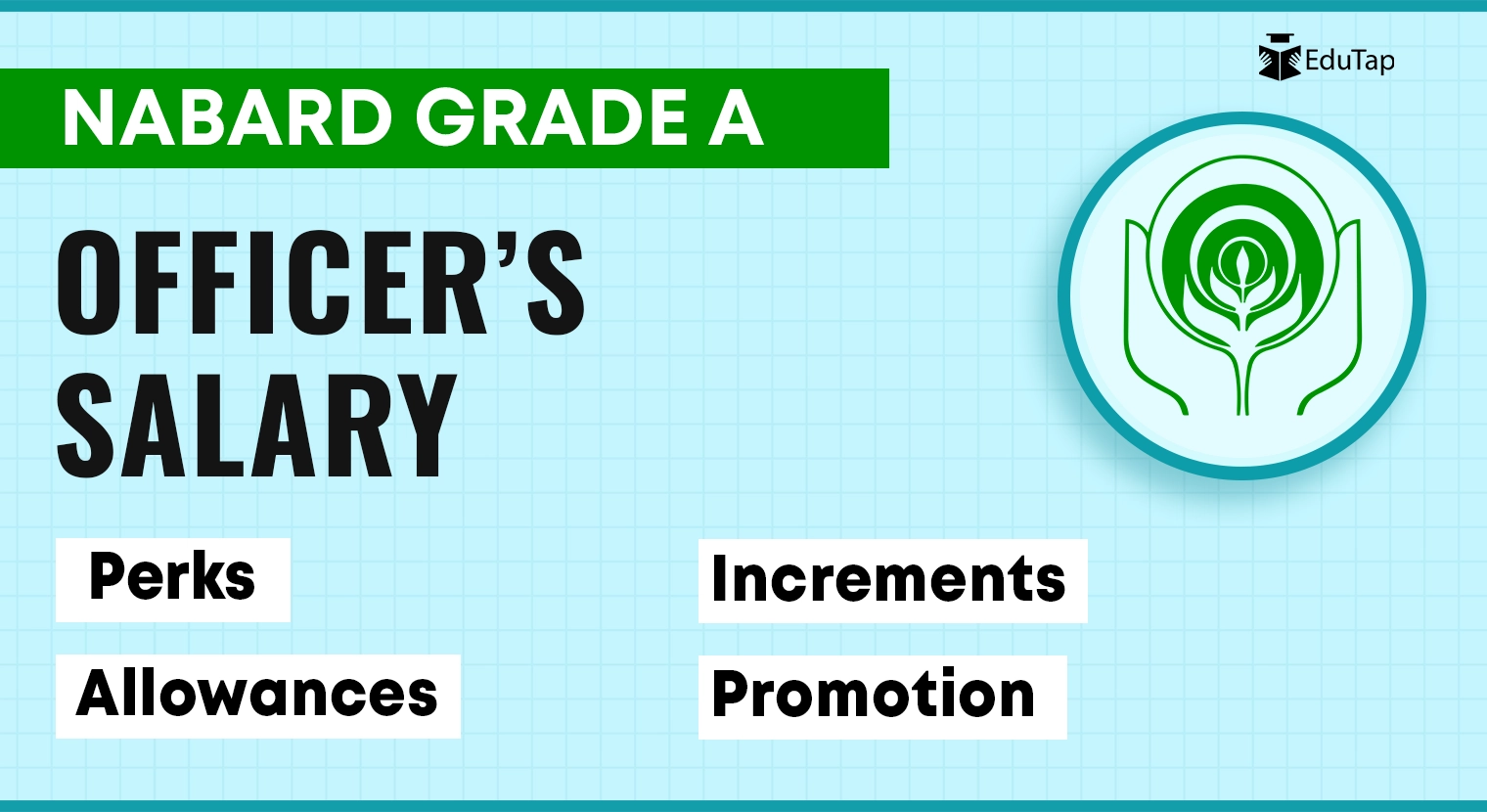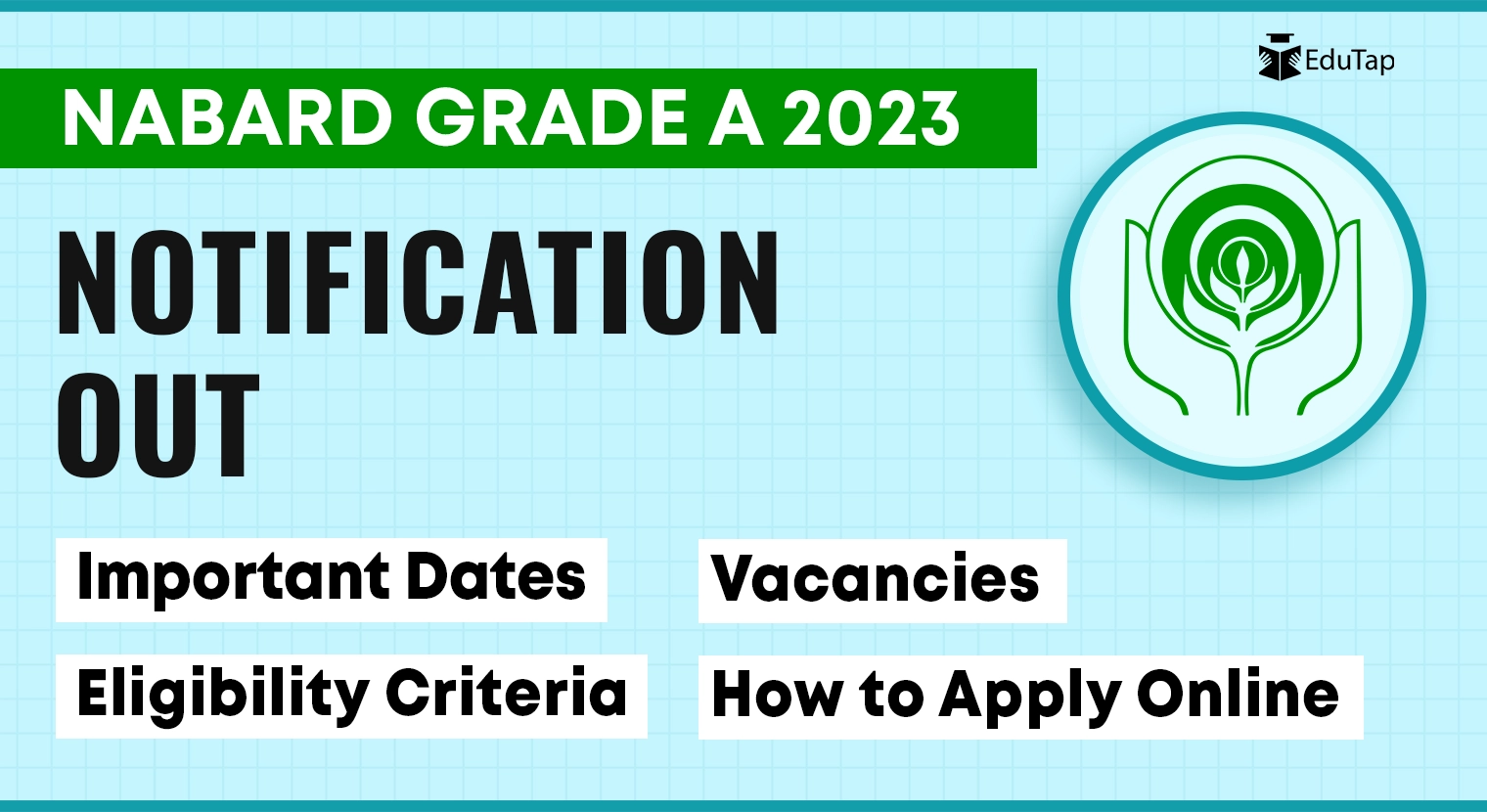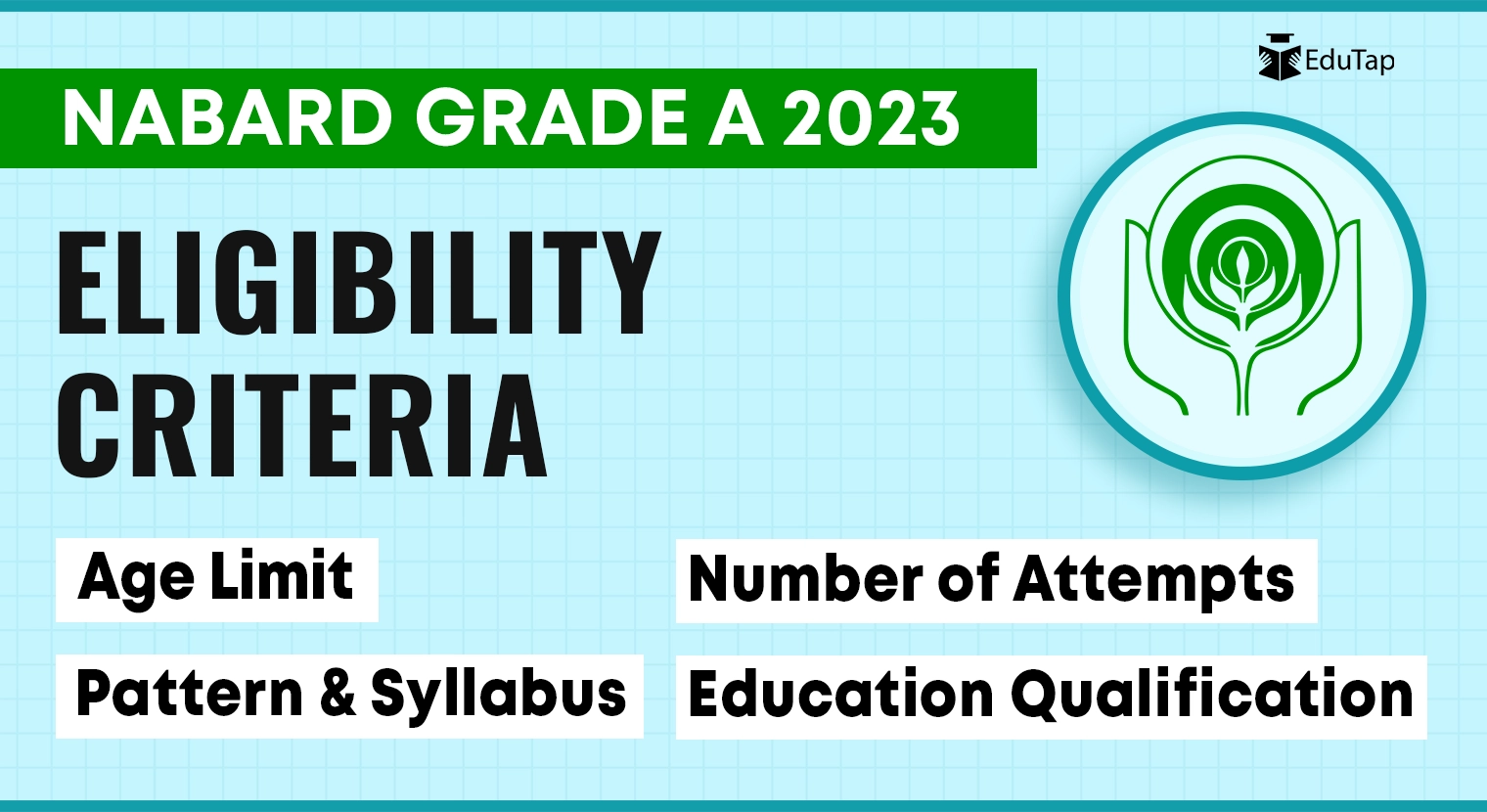With the NABARD Grade A 2023 notification out, it is all hands on deck. If you are appearing for the NABARD Assistant Manager exam this year, you need a good idea of what to expect in the examination paper. There is no better way of assessing what you are up against than by going through the solved previous years’ question papers of the NABARD Grade A exam. By going through the questions NABARD has set to test aspirants over the years, you can better narrow down the syllabus and put effort where it will pay off for sure. In this article, we are going to discuss the past five year’s papers and try to shortlist the most important topics for the NABARD Grade A 2023 exam.
Why To Solve NABARD Grade A PYQs
Solving the Previous Years’ Question papers (PYQs) is a critical step in preparing for any competitive exam. The primary benefits of solving PYQs are:
- Familiarity with the exam pattern: Solving PYQs helps you understand the exam structure and difficulty level. It bolsters your preparation and helps you gain confidence.
- Identifying important topics: PYQs help you narrow down the more significant areas to concentrate on in your preparation. By focusing on these topics, you can optimise your study time. For example, for NABARD Grade A, there is no defined syllabus for a majority of the Phase I subjects. However, PYQ analysis can tell you which chapters should be your focus points in these subjects.
- Time management: Timebound PYQ solving enhances time management abilities. Mastering time management allows you to allocate your time efficiently. The practice will help you to complete the paper on time.
- Self-assessment: PYQs provide an opportunity to assess your current level of preparation. Solving PYQs lets you identify your strengths and weaknesses. You can now work on your weak points and improve your performance in the exam.
- Revision: You can also use PYQs as practice papers. Using PYQs as a revision tool will help you remember key ideas and concepts.
Thus, solving PYQs is a valuable preparation strategy for competitive exams. Deeply analyzing the questions asked in the previous years allows you to pinpoint important topics, refine your time management skills, assess personal aptitudes, and revise the entire coursework. Make sure to prioritise solving PYQs in your exam strategy.
Questions from NABARD Grade A 2022: A Quick Look
Before jumping into the analysis, let us look at some questions from the NABARD Grade A 2022 exam. We strongly recommend you go through them before proceeding to the rest of the article.
Phase I – English
Q) Identify the wrong part in the sentence.
(A) Sea Lions are able to / (B) rotate their back flippers under / (C) their body, which allows / (D) them to walk in land
[a] A
[b] B
[c] C
[d] D
[e] All parts of the sentence are correct
Phase I – Decision Making
Q) Which of the following is a quantitative method of decision-making?
[a] PERT
[b] Rule of thumb
[c] Psychological analysis
[d] Decision making by creativity
[e] Following standard procedure
Phase I – Quantitative Aptitude
Q) If the ratio of the number of applications received by College E and C together to the number of applications received by College X is 35:18, find the number of applications received by college X?
[a] 90
[b] 85
[c] 60
[d] 75
[e] 80
Phase I – Computer Knowledge
Q) The 1’s complementary in a binary of 1000 is?
[a] 0111
[b] 1001
[c] 1111
[d] 1101
[e] 1011
Phase I – Reasoning
Eight persons Arjun, Binod, Chetan, Daksh, Firoz, Kartik, Gautam and Himanshu are sitting around a circular table. No two persons belong to the same country. All are facing inside the circle. All the above information is not necessarily in the same order.
The one who belongs to France sits second to the left of Arjun. Two persons sit between Arjun and Binod. The one who sits immediate right of Binod belongs to India. Daksh sits second to the right of Binod. Three persons sit between the one who belongs to Australia and the one who belongs to China.
Binod doesn’t belong to either China or Australia. Firoz is an immediate neighbour of Binod, but not an immediate neighbour of Daksh. Gautam belongs to Israel. The one who sits second to the left of Daksh belongs to Argentina. Arjun is not from the USA. Neither Gautam nor Firoz is an immediate neighbour of Himanshu. Two persons sit between the one who belongs to USA and Daksh. Two persons sit between Chetan and the one who belongs to China. One person is from Germany.
Q) Who among the following sits to the immediate left of Gautam?
[a] Firoz
[b] Kartik
[c] Chetan
[d] Binod
[e] None of these
Phase I – General Awareness
Q.) Which country launched its first lunar orbiter named ‘Danuri’ in August 2022?
[a] South Korea
[b] Brazil
[c] Argentine
[d] Namibia
[e] Egypt
Phase I- Economic and Social Issues
Q) Which of the following does not have an RRB?
[a] Goa
[b Kerala
[c] Meghalaya
[d] Tripura
[e] Nagaland
Phase I – Agriculture and Rural Development
Q.) What type of farming is done along the contour of sloping land to avoid soil and water erosion in the land with less than 33%?
[a] Contour farming
[b] Bench Terracing
[c] Raised-bed Terracing
[d] Paddy Terracing
[e] Strip Cropping
Phase II – Descriptive English
Q.) “Education is alienating youths from agriculture “- Agree or Disagree? [300 words]
Phase II – Economic and Social Issues
Objective: Q) What is the Gross Value Addition (GVA) of the agriculture sector as per the Economic Survey 2021-22?
Subjective: Q.) Social Infrastructure is a prerequisite for inclusive growth. Discuss. [15 marks]
Phase II – Agriculture and Rural Development
Objective: Q) Under NFSA, rice is made available at subsidized prices of ________ per kg.
Subjective: Discuss the aim, objective and implementation strategy of the Pradhan Mantri Matsya Sampada Yojana. [15 marks]
What is the first thing you noticed while going through the questions?
After an initial read or two, you will have noticed that none of the questions are exceedingly difficult.
The questions are based on the fundamental concepts of a subject or on a popular news item. As long as you have covered that precise area at a surface level, you should be able to answer these questions. The trick is to know which topics to cover and therefore PYQs are the best way to gather this information.
Analysing Phase I PYQs of NABARD Grade A
Non Merit Section
Phase I of the NABARD Grade A exam has a merit and a non-merit section. The individual scores in each part of the merit section combined give you the final score for Phase I. For the non-merit or qualifying section, you only need to clear the sectional cut-offs. There is no syllabus specified for the non merit section in the official notification. It comprises 5 subjects – Reasoning Ability, English Language, Computer Knowledge, Quantitative Aptitude, and Decision Making. However, by using PYQs, you can list down the important topics you need to prepare.
Logical Reasoning
The topics which you must cover in logical reasoning are:
- Alphanumeric series
- Coding and Decoding
- Syllogism
- Direction Sense
- Inequality
- Ranking and Order
- Blood Relation
- Puzzles and sitting arrangement
- Input-Output
- Questions based on Statements
- Questions based on Data Sufficiency
Let us take a look at the number of questions asked from the different topics of reasoning in the last 5 years.
|
Topic Name |
2022 |
2021 |
2020 |
2019 |
2018 |
|---|---|---|---|---|---|
|
Seating Arrangement |
8 |
8 |
4 |
2 |
5 |
|
Puzzles |
4 |
6 |
4 |
5 |
2 |
|
Inequality |
2 |
2 |
2 |
3 |
2 |
|
Syllogism |
2 |
2 |
0 |
5 |
4 |
|
Ranking |
2 |
0 |
1 |
5 |
0 |
|
Blood Relation |
1 |
0 |
0 |
0 |
5 |
|
Coding & Decoding |
0 |
0 |
5 |
0 |
0 |
|
Direction Sense |
1 |
2 |
0 |
0 |
0 |
|
Data Sufficiency |
0 |
0 |
2 |
0 |
0 |
|
Analytical |
0 |
0 |
2 |
0 |
2 |
Based on the above data, we can list the most important topics of logical reasoning as follows:
- Seating Arrangement
- Puzzles
- Inequality
- Syllogism
Quantitative Aptitude
The important topics which you must cover in quantitative aptitude are:
- Ratio and Proportion
- Percentage
- Profit and Loss
- Simple and Compound Interest
- Questions on Average and Age
- Time and Work
- Pipes and Cistern
- Time and Distance
- Mixture and Alligation
- Questions on Series and Quadratic equation
- Mathematical Inequalities
- Number series
- Data interpretation
- Simplification/approximation
- Quantity comparisons
On looking at the breakdown of the previous year’s questions, we can narrow the above list further.
|
Topic Name |
2022 |
2021 |
2020 |
2019 |
2018 |
|---|---|---|---|---|---|
|
Number Series |
3 |
3 |
3 |
3 |
4 |
|
Data Interpretation |
6 |
5 |
6 |
6 |
5 |
|
Quadratic Equations |
3 |
0 |
3 |
3 |
3 |
|
Simplification |
0 |
3 |
0 |
0 |
0 |
|
Word Problem |
0 |
3 |
6 |
0 |
0 |
|
Percentage |
0 |
0 |
0 |
1 |
0 |
|
Profit & Loss |
1 |
0 |
1 |
1 |
0 |
|
Time & Distance |
1 |
1 |
0 |
0 |
1 |
|
Time & Work |
1 |
2 |
0 |
1 |
1 |
|
Data Sufficiency |
0 |
0 |
0 |
0 |
4 |
|
Ages & Partnership |
2 |
0 |
0 |
2 |
1 |
|
2 D, 3 D |
1 |
1 |
0 |
1 |
1 |
|
Ratio, Mixture |
1 |
1 |
1 |
1 |
0 |
|
Interest |
1 |
1 |
0 |
1 |
0 |
Based on the above data, we can see that the most important topics of quantitative aptitude are:
- Number Series
- Data Interpretation
- Quadratic Equations
- Word Problem
English Language
The main topics which you must cover in the English language are:
- Reading Comprehension
- Sentence Rearrangement
- Cloze Test
- Para jumbles
- Double fillers
- Error Detection and Sentence Improvement
- Vocabulary (Synonyms, Antonyms, One-word Substitution, Phrasal verbs)
Below is the topic-wise breakdown for the last 5 years.
|
Topic Name |
2022 |
2021 |
2020 |
2019 |
2018 |
|---|---|---|---|---|---|
|
Reading Comprehension |
7 |
12 |
15 |
12 |
10 |
|
Word Replacement |
3 |
5 |
10 |
4 |
2 |
|
Cloze Test |
7 |
5 |
5 |
6 |
10 |
|
Sentence Rearrangement |
5 |
5 |
5 |
3 |
5 |
|
Error Detection |
5 |
3 |
2 |
10 |
10 |
|
Miscellaneous |
3 |
0 |
3 |
5 |
0 |
|
Total |
30 |
30 |
40 |
40 |
40 |
The English section has a good balance of questions across various topics. As a result, it is challenging to shortlist just a few topics. But if we have to pick one, reading comprehension is the topic to focus on.
Computer Knowledge
The primary topics which you must cover in computer language are:
- Computer Awareness
- Hardware and Memory
- Software and Operating Systems
- MS Office
- Database Management System
- Internet and Computer Security
- History and Computer & Generations
Let us take a look at the topic-wise breakdown over the years.
|
Topic Name |
2022 |
2021 |
2020 |
2019 |
2018 |
2017 |
2016 |
|---|---|---|---|---|---|---|---|
|
Introduction to Computer |
0 |
2 |
0 |
2 |
0 |
0 |
2 |
|
Computer Organisation and Data Processing Cycle |
2 |
3 |
2 |
0 |
1 |
0 |
1 |
|
Hardware |
1 |
1 |
5 |
1 |
0 |
2 |
1 |
|
Memory |
4 |
1 |
1 |
2 |
1 |
1 |
2 |
|
Software |
1 |
1 |
1 |
3 |
4 |
3 |
1 |
|
Operating System |
0 |
1 |
0 |
0 |
3 |
0 |
1 |
|
Computer Network |
5 |
2 |
5 |
7 |
8 |
4 |
2 |
|
Number System |
0 |
0 |
0 |
0 |
0 |
0 |
1 |
|
Microsoft Office |
7 |
8 |
4 |
3 |
3 |
3 |
6 |
|
Database Management System |
0 |
1 |
0 |
2 |
0 |
0 |
1 |
|
Computer Security |
0 |
0 |
1 |
0 |
0 |
4 |
2 |
|
Fringe topics |
0 |
0 |
1 |
0 |
0 |
2 |
0 |
Based on the above data, we can list the most important topics of computer language:
- Microsoft Office
- Computer Network
- Computer Organisation and Data Processing Cycle
- Memory
- Software
Decision Making
The topics which you must cover while studying decision making are:
- Basics of Decision Making
- Types of Decision Making
- Decision Making Models
- Decision Making Approaches
- Factors affecting Decision Making
- Types of Problems Decision Making
Given that we have just two years of questions with us, the PYQ’s breakdown shows some topics have been left untouched.
|
Topic Name |
2022 |
2021 |
|---|---|---|
|
Basics of Decision Making — Introduction |
1 |
1 |
|
Types of Decision Making |
NA |
1 |
|
Decision Making Process |
NA |
1 |
|
Decision Making Models |
NA |
1 |
|
Conditions of Decision Making |
1 |
NA |
|
Approaches of Decision Making |
2 |
NA |
|
Techniques of Decision Making |
1 |
3 |
|
Decision Making Styles |
NA |
NA |
|
Biasness in decision Making |
3 |
NA |
|
Fringe Topics (General Management, Planning and Leadership) |
2 |
3 |
NABARD introduced decision making to its Grade A Phase I syllabus in 2021. Therefore, just analysing the two years of data is not enough to shortlist important topics. It’s best to have a general idea of the entire syllabus and practice as much as possible.
Merit Section
A detailed syllabus has not been defined for the merit sections of Phase I. However, 2 of the subjects of the merit section of Phase 1, namely Economics and Social Issues (ESI) and Agriculture and Rural Development (ARD) are present in Phase 2 as well, so we can use the detailed syllabus of ESI and ARD listed in the official notification for Phase 1 preparation as well.
General Awareness
The emphasis on current affairs in Phase I GA is disproportionately more than static. It is a good mix of general awareness and questions that can be categorised as related to ESI or ARD. This makes integrated study for all three components more crucial.
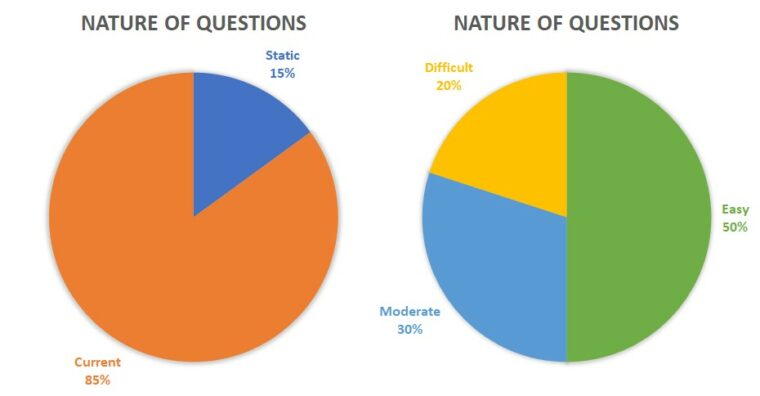
As the chart above shows, 80% of the questions in GA are easy-to-moderate in the range of difficulty. Have a basic understanding of static concepts and concentrate your preparation primarily on current affairs. This way, you can easily score high in the GA section of Phase I. Leaving a few tricky questions is okay. Your goal is to clear the cut-off. Covering the last 5-6 months of news is sufficient for Phase I. If you are short on time, make sure you cover at least the last three months’ news.
The breakdown of the PYQs shows you the more important topics.
|
Topic Name |
2022 |
2021 |
2020 |
2019 |
2018 |
|---|---|---|---|---|---|
|
Govt Schemes/Acts/Programmes |
2 |
4 |
2 |
3 |
4 |
|
Reports |
0 |
1 |
0 |
0 |
0 |
|
First in News |
1 |
1 |
0 |
2 |
3 |
|
Place in News |
3 |
0 |
4 |
1 |
1 |
|
Environment |
1 |
1 |
0 |
0 |
1 |
|
Persons in News |
1 |
2 |
1 |
4 |
3 |
|
Awards/ Honour |
1 |
0 |
2 |
2 |
1 |
|
Books |
1 |
2 |
0 |
1 |
1 |
|
Sports |
1 |
1 |
2 |
0 |
1 |
|
Defense |
1 |
0 |
2 |
1 |
0 |
|
Science and Tech |
2 |
0 |
0 |
0 |
0 |
|
RBI in News |
1 |
2 |
0 |
0 |
0 |
|
Days in News |
1 |
1 |
1 |
0 |
1 |
|
Miscellaneous |
4 |
5 |
6 |
6 |
4 |
Based on the above data, we can list the most important topics of general awareness:
- Government Schemes
- Banking and Finance
- Person in News
- Places in News
- Science and Technology
Economics and Social Issues (ESI)
The PYQs show a trend of emphasis on the current news over static concepts of economy.
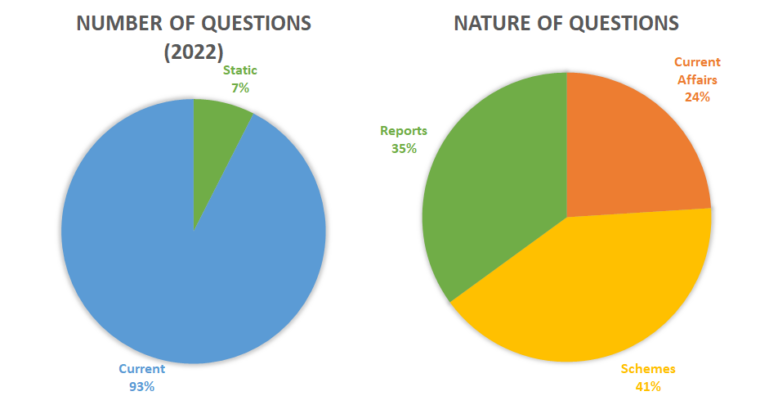
On further inspection, we see the same difficulty standards from Phase I – the moderate-easy questions take up most of the paper. Covering news of the last three months before the exam remains the most crucial.
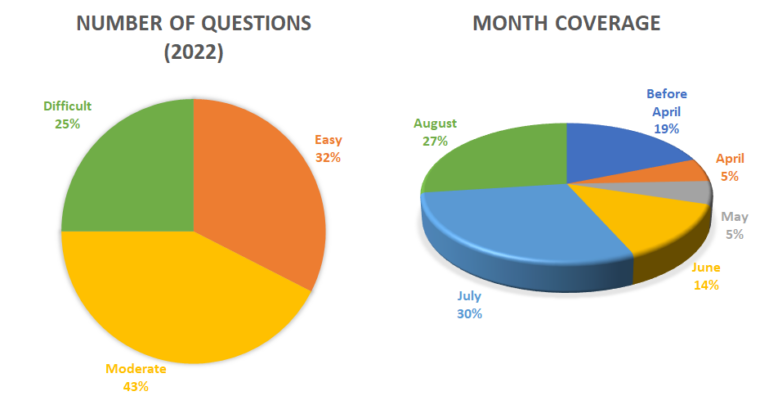
Below mentioned is the topic-wise breakdown for each year.
|
Topics asked in examination |
2022 |
2021 |
2020 |
2019 |
2018 |
|---|---|---|---|---|---|
|
Govt schemes/Programmes/Policies |
15 |
16 |
16 |
23 |
5 |
|
Reports/Indices |
11 |
2 |
4 |
4 |
6 |
|
Union Budget/Eco Survey |
1 |
3 |
2 |
1 |
6 |
|
ESI syllabus related Current Affairs |
8 |
4 |
7 |
9 |
9 |
|
ARD Static/ Current |
2 |
0 |
9 |
3 |
0 |
|
ESI static |
3 |
13 |
2 |
0 |
14 |
|
Finance Current Affairs |
0 |
2 |
0 |
0 |
0 |
Based on the above data, we can list the most important topics of ESI:
- Government Schemes
- Reports/Indices
- ESI Current Affairs
- ESI Static
Agriculture and Rural Development (ARD)
The NABARD Grade A recruitment process focuses majorly on the agriculture sector. For the ARD paper, the emphasis is on static concepts. However, the questions are still easy to moderate.
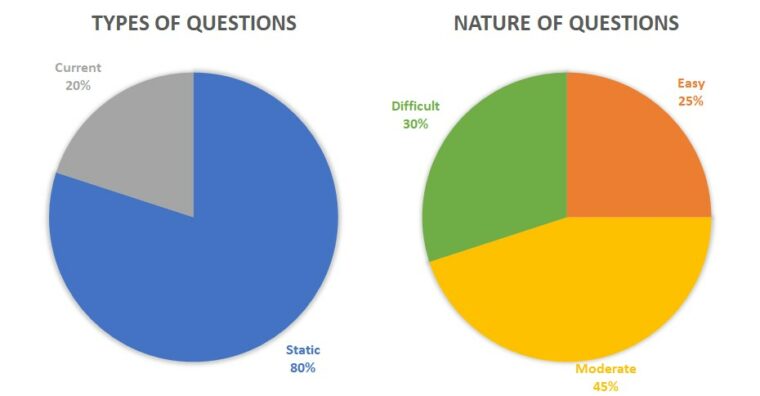
Let us take a look at the topic-wise breakdown for each year.
Based on the above data, we can list below the most important topics of ARD:
- Agronomy
- Farming System
- Soil and Water Conservation
- Plantation and Horticulture
- Animal Husbandry
- ARD Current Affairs
Analysing Phase II PYQs for NABARD Grade A
Descriptive English
A NABARD Grade A officer must be able to express themselves clearly on the paper. Drafting official documents is one of their primary responsibilities in this job. The questions in the descriptive English paper test an aspirant’s communication skills.
|
Topic Name |
2022 |
2021 |
2020 |
2019 |
2018 |
|---|---|---|---|---|---|
|
Introduction to Agriculture |
1 |
1 |
0 |
2 |
2 |
|
Agronomy |
4 |
2 |
2 |
0 |
4 |
|
Farming System |
4 |
3 |
1 |
0 |
1 |
|
Cropping System & Pattern |
0 |
0 |
1 |
0 |
1 |
|
Agro-metrology |
0 |
2 |
2 |
0 |
1 |
|
Seed and Sowing |
0 |
0 |
0 |
2 |
2 |
|
Soil and Water Conservation |
4 |
3 |
3 |
2 |
6 |
|
Water Resource & Irrigation |
0 |
2 |
2 |
1 |
2 |
|
Agriculture Engineering |
0 |
1 |
0 |
0 |
2 |
|
Plantation and Horticulture |
5 |
3 |
4 |
5 |
1 |
|
Animal Husbandry |
5 |
3 |
3 |
5 |
6 |
|
Fisheries |
2 |
3 |
1 |
1 |
1 |
|
Forestry |
3 |
2 |
0 |
0 |
0 |
|
Agriculture extension |
2 |
2 |
0 |
2 |
1 |
|
Agriculture Economics |
1 |
0 |
3 |
3 |
1 |
|
Important Agronomic Practices |
1 |
0 |
3 |
1 |
0 |
|
Rural Development |
0 |
0 |
2 |
0 |
0 |
|
ARD CA |
8 |
8 |
9 |
9 |
8 |
|
ESI CA |
0 |
5 |
4 |
7 |
1 |
The essay topics are a mix of environmental and economic issues, usually centred around the rural and agriculture sector. You must thoroughly prepare for the ESI and ARD syllabuses and keep up with current events. This will give you the fodder for your essay.
The preci subjects are selected using the same criteria as the essay. In the letter-writing portion, you must compose an official letter to a person of authority, usually in an attempt to address an issue.
Economics and Social Issues, and Agriculture and Rural Development
In Phase II, Paper 2 on Economics and Social Issues (ESI), and Agriculture and Rural Development (ARD) includes objective and subjective questions. Below is a topic-wise breakdown of the objective questions asked in this paper over the years.
|
Topic Name |
2022 |
2021 |
2020 |
2019 |
2018 |
|---|---|---|---|---|---|
|
Government Schemes |
14 |
12 |
18 |
14 |
8 |
|
Reports/Indices |
0 |
1 |
3 |
10 |
5 |
|
Union Budget/Eco Survey |
2 |
0 |
0 |
5 |
9 |
|
ESI Current Affairs |
0 |
9 |
11 |
11 |
11 |
|
ARD Static |
5 |
5 |
20 |
8 |
9 |
|
ARD Current Affairs |
8 |
1 |
6 |
10 |
20 |
|
ARD Reports |
0 |
2 |
0 |
3 |
1 |
|
ESI Static |
1 |
0 |
7 |
4 |
2 |
From the above breakdown, we can see that most of the questions are from government schemes.
There isn’t a lot of data available for the subjective section. Based on NABARD’s past records in the objective section and the past two year’s questions, we can narrow it down to some topics.
|
Topic Name |
2022 |
2021 |
2020 |
2019 |
2018 |
|---|---|---|---|---|---|
|
Government Schemes |
14 |
12 |
18 |
14 |
8 |
|
Reports/Indices |
0 |
1 |
3 |
10 |
5 |
|
Union Budget/Eco Survey |
2 |
0 |
0 |
5 |
9 |
|
ESI Current Affairs |
0 |
9 |
11 |
11 |
11 |
|
ARD Static |
5 |
5 |
20 |
8 |
9 |
|
ARD Current Affairs |
8 |
1 |
6 |
10 |
20 |
|
ARD Reports |
0 |
2 |
0 |
3 |
1 |
|
ESI Static |
1 |
0 |
7 |
4 |
2 |
Analysis of the NABARD Grade A 2022 Phase II Paper 2
For a better analysis, let us dive into the NABARD Grade A Phase II Paper 2 paper.
First, let us look at the balance between ESI and ARD.
|
SUBJECT |
TOTAL NUMBER OF QUESTIONS ASKED |
TOTAL MARKS ALLOCATED |
|---|---|---|
|
ESI |
15 |
26 |
|
ARD |
15 |
24 |
The above table demonstrates the balanced approach in division of questions between ESI and ARD. There was a mix of 1 and 2 marker questions. Thus, 30 questions add up to 50 marks. The questions were generally easy, with a few moderately difficult ones thrown in for good measure.
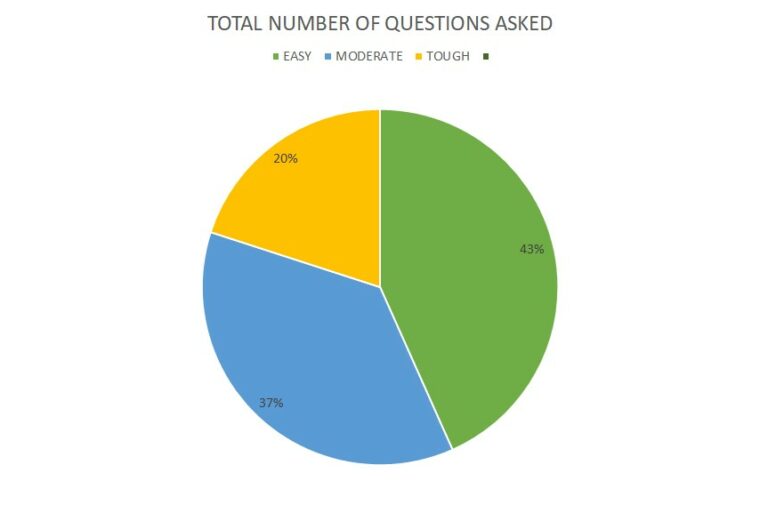
In the below pie chart, we can see that most of the questions in this ESI paper 2 were rooted in current affairs. The schemes, reports, and other developments that have been in the news over the few months leading up to the exam form the basis of this paper.

The table below demonstrates that most of the questions in current affairs were from topics in the news in the last three months leading up to the exam.
|
Months Before The Examination |
No. of Questions |
Total Number of Marks |
|---|---|---|
|
September |
1 |
1 |
|
August |
8 |
13 |
|
July |
6 |
11 |
|
June |
0 |
0 |
|
May |
0 |
0 |
|
Before May |
3 |
6 |
There were questions from prominent government schemes. Flagship schemes by the ministries were given the most importance.
|
Type of Question |
Total Number of Questions Asked |
Total Number of Marks |
|---|---|---|
|
Questions based on old schemes (launched more than an year before the exam) |
12 |
20 |
|
Questions based on new schemes (launched within the one year period before the exam) |
03 |
06 |
|
Total number of questions based on old and new schemes |
15 |
26 |
With its emphasis on older schemes, the data in the above table may appear random. But there is a method to the madness. The questions are on flagship initiatives in the news over the past year.
Although the importance of reports has declined over the years, national reports in the news are still relevant, as observed in the table below.
|
Type of Question |
Total Number of Questions Asked |
Total Number of Marks |
|---|---|---|
|
Questions based on international reports |
00 |
00 |
|
Questions based on national reports |
02 |
04 |
|
Questions based on reports released by NABARD and ministries related to agriculture |
01 |
01 |
|
Questions based on national and international reports |
02 |
05 |
Download NABARD Grade A Previous Year’s Papers
NABARD Grade A is conducted through computer-based tests. NABARD does not release its question papers on its official website. As a result, you will not find the official version of the previous year’s questions online. EduTap collects memory-based questions from candidates who appear for the exam each year, cross-references and verifies them, and finally compiles them into booklets with solutions. Aspirants can use these booklets as a source to guide their preparation. You can download NABARD Grade A’s solved previous year’s questions from 2018 to 2022 here.
Best Way to Utilise a NABARD Grade A Previous Year Paper
The best way to utilise the previous year’s question papers (PYQs) in competitive exams is to incorporate them into your study plan. Here are a few tips on how to ensure you utilise your NABARD Grade A question papers to the fullest:
- Start early: Start solving PYQs early in your preparation. It will help you understand the exam pattern and the difficulty level. It will give you enough time to work on your weaknesses.
- Time yourself: Solve PYQs under timed conditions to improve your time management skills. Gradually, you will learn to pace yourself and allocate your time effectively during the exam.
- Analyse your performance: Do not just solve a paper and then let it be – analyse your performance. Identify the areas where you need to improve and work on them.
- Revise regularly: Use PYQs as a tool to recall important concepts and formulas, and revisit your understanding of the subject.
Thus, incorporating PYQs into your study plan can help you prepare more effectively for the NABARD Grade A exam. Follow the right process to maximise the benefits you can get from NABARD Grade A previous year’s papers.
Analysing Interview PYQs for NABARD Grade A
Just like it is in phases I and II, knowing what questions the NABARD Grade A interview panels have asked candidates throughout the years is an invaluable asset. It reduces the scope of what you must cover before your interview. This helps establish expectations and enhances your confidence.
NABARD Grade A Toppers Interview
Let us take a look at a few interview experiences.
Lanka Ankith
Ankith started his journey as a UPSC aspirant. Meanwhile, he cleared IBPS PO and joined the Union Bank of India in a rural posting. His interview started with a simple introduction. What followed were questions on why he wanted to join NABARD and what would make him a good fit. There were questions about his business profile and his present organisation. Another interesting question was on NABARD’s role in sustainable development tools. The panel also asked him for any suggestions he had for NABARD. To know more about how Ankith made it to the finish line, you can watch Ankith’s entire interview here.
Soham Chaudhary
Soham graduated from Uttar Banga Krishi Viswavidyalaya in 2015 as a university topper. He ranked 4 in ICAR JRF and took up MSc in Molecular Biology and Biotech in Delhi. In 2017, he got into IRI for research. However, soon after, he had to start looking for employment due to family responsibilities. His background in biotech was the most prominent area of questioning in his interview. The main emphasis was on using his training in biotech in the field of agriculture. To know more about how Soham reached his goal, you can watch the entire interview of Soham here.
Subhasis Sarkar
Subhashish completed his BSc in Agriculture in 2013 and has been a part of the academic circles. The interview panel requested him to explain his work in simple words that even a farmer might comprehend. They also asked him a few questions about Self Help Groups and NABARD’s work with Natural Resource Management initiatives. To know more about how Subhasis grabbed his dream job, you can watch the entire interview of Subhasis here.
Important Topics
Following the questions asked to candidates over the years, we have a better picture of what all falls under crucial topics for the NABARD Grade A interview:
- The key is your resume or biodata. Construct your biodata to force the interviewer to play to your strengths.
- Thoroughly examine the NABARD Annual Report, including reports for your state and district.
- Prepare questions on your job responsibilities, recent projects, and current and past organisations.
- Pay attention to your core subjects from your educational background.
- Know your state’s landmarks, geography, history, economy, and so on.
Conclusion
Now that you are familiar with the previous year’s questions with answers, we hope you are a little closer to devising the right preparation strategy. If you still need more information, check out our detailed article on the exam pattern and syllabus of the NABARD Grade A exam. EduTap wishes you all the very best for the upcoming exam.
FAQs
Yes, NABARD regularly recruits Grade A Officers. In previous years, such as 2021 and 2022, NABARD issued recruitment announcements for Grade A Officers. The recruitment is for a variety of positions, including Assistant Manager in Grade ‘A’ in the Rural Development Banking Service (RDBS), Assistant Manager (Protocol & Security Service) in Grade ‘A’, and Assistant Manager (Rajbhasha Service) in Grade ‘A’. Candidates can apply online at the NABARD website during the application period.
Unfortunately, NABARD does not make its papers available to the public. But different coaching institutes including EduTap provide a memory-based version of the computer-based question papers on their websites.
No. NABARD holds its exams as CBT or computer-based test papers. Even the descriptive part is typed using a keyboard.
The NABARD Grade A exam underwent major changes in 2021. The concept of merit and non-merit sections was introduced in Phase I while adding a new qualifying section – Decision Making. Phase II paper for ESI and ARD was divided into two sections with the introduction of subjective questions besides objective ones. The interview now carried a weightage of 50 marks earlier which was of 25 marks.
No. PYQs are meant to be a guide. They give you an idea of what to expect. NABARD, being a time-bound exam, needs much more practice. Taking mock tests becomes essential for a competitive exam like NABARD Grade A.
